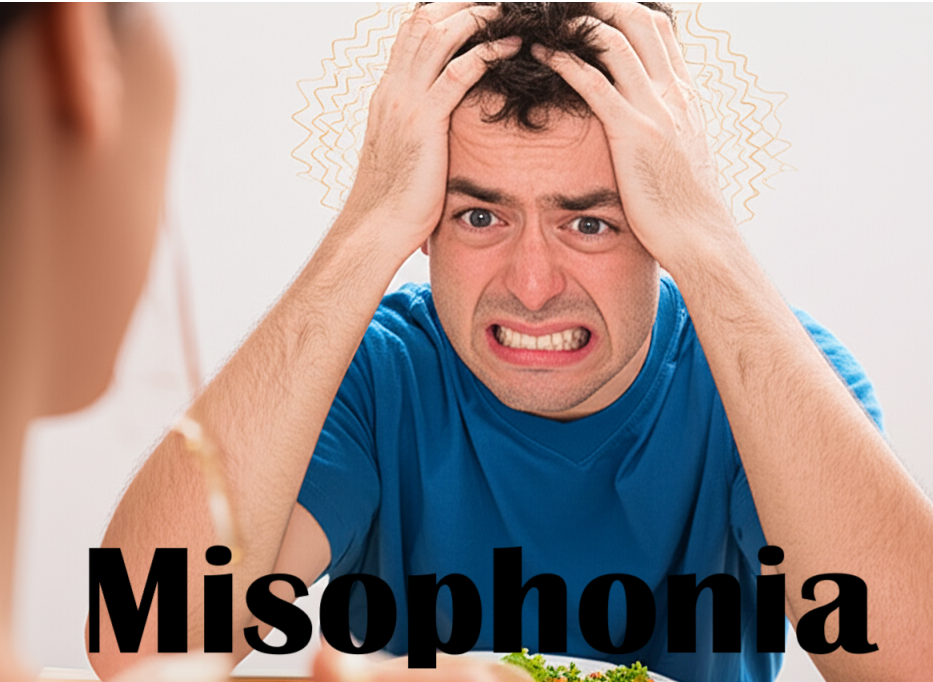Imagine feeling sudden waves of anger or panic triggered by everyday sounds like chewing, tapping, or breathing. This is the experience for individuals with misophonia—a condition in which specific sounds can trigger strong emotional and physical responses. Though still a relatively new area of study, misophonia is gaining recognition for its significant impact on mental health and daily functioning. Understanding this disorder is essential for those affected and their loved ones, helping to foster empathy and guide effective management.
Causes and Risk Factors
The exact cause of misophonia remains under investigation, but scientific research suggests several contributing factors:
Brain Function and Connectivity
Enhanced Neural Connectivity: Studies indicate that in people with misophonia, there is increased connectivity between the auditory processing areas and the limbic system, which governs emotions. This may cause ordinary sounds to trigger exaggerated emotional responses.
Autonomic Nervous System Involvement: Misophonia may involve an overactive sympathetic nervous system, leading to physical symptoms such as increased heart rate and muscle tension during exposure to trigger sounds.
Psychological and Environmental Influences
Conditioned Responses: Repeated exposure to certain sounds in stressful or negative contexts, especially during childhood, may condition emotional reactions to those sounds.
Coexisting Conditions: Misophonia is more commonly reported among individuals with anxiety disorders, obsessive-compulsive disorder (OCD), attention deficit hyperactivity disorder (ADHD), and autism spectrum disorder (ASD).
Risk Factors
Age: Symptoms of misophonia often begin to appear during adolescence or early adulthood.
Gender: Some studies suggest a higher prevalence in females, though misophonia affects all genders.
Common Symptoms
Misophonia is characterized by a range of emotional, physical, and behavioral symptoms triggered by specific sounds:
Emotional Responses
Intense feelings of anger, irritation, disgust, or anxiety.
Sudden onset of panic or feelings of being overwhelmed.
Physical Reactions
Increased heart rate, sweating, muscle tightness, or a sensation of “fight or flight.”
Goosebumps or tension in the body.
Behavioral Patterns
Avoidance of social situations where trigger sounds are common, such as family meals or group gatherings.
Attempts to stop or confront the source of the sound.
Typical Trigger Sounds
Oral noises: chewing, swallowing, lip-smacking, or breathing sounds.
Repetitive noises: pen clicking, foot tapping, keyboard typing.
It is important to note that reactions are involuntary and can cause significant distress, but misophonia does not cause hearing loss or physical damage.
Diagnosis Methods
Currently, no standardized diagnostic test exists for misophonia. Diagnosis is primarily clinical and involves:
Clinical Interview
A detailed discussion about the nature of sound triggers, emotional and physical responses, and the impact on daily life.
Assessment Tools
Use of validated questionnaires designed to evaluate the severity of misophonia symptoms and differentiate it from other auditory or psychological conditions.
Exclusion of Other Conditions
Hearing tests and neurological examinations may be conducted to rule out tinnitus, hyperacusis, or other neurological disorders.
Treatment Options
While no definitive cure exists, a combination of medical and lifestyle approaches can help manage misophonia symptoms effectively.
Therapeutic Approaches
Cognitive Behavioral Therapy (CBT): Helps individuals reframe negative thoughts related to trigger sounds and develop coping strategies.
Progressive Muscle Relaxation (PMR): A technique to reduce physical tension associated with misophonia episodes.
Neural Repatterning Techniques: Emerging therapies aim to weaken negative emotional associations with trigger sounds by pairing them with positive stimuli.
Lifestyle and Environmental Strategies
Noise Management: Use of noise-canceling headphones or earplugs to reduce exposure in triggering environments.
Sound Masking: White noise machines or background music can help mask trigger sounds.
Stress Reduction: Mindfulness, yoga, and breathing exercises can lower overall anxiety, potentially reducing misophonia severity.
Support Networks
Participating in support groups and mental health communities can offer valuable emotional support and practical strategies for managing misophonia.
For more resources and support, consider visiting Mindzo.
Prevention and Management Tips
Although misophonia cannot always be prevented, the following evidence-based strategies can improve management:
Identify and Track Triggers: Keeping a journal of triggering sounds and situations can help anticipate and prepare for episodes.
Open Communication: Talking openly with family and friends about your experiences can help build understanding and strengthen support.
Create Quiet Spaces: Designate areas at home or work where you can retreat to avoid trigger sounds.
Maintain Healthy Sleep Patterns: Adequate rest can reduce sensitivity to triggers.
Practice Regular Stress Management: Incorporate relaxation techniques into daily routines.
When to See a Doctor
It is advisable to seek professional help if:
Sound-triggered reactions interfere with daily activities, work, or relationships.
Avoidance behaviors lead to social isolation or significant distress.
Self-help strategies and over-the-counter solutions do not provide relief.
Early consultation with a healthcare provider, such as a psychologist or audiologist, can lead to tailored treatment plans and improved outcomes.
Disclaimer: Consult a qualified healthcare professional with any questions or concerns you may have. By understanding misophonia’s complexities and available management options, individuals affected can take meaningful steps toward improving their quality of life.
ALSO KNOW :
PORN AND MENTAL HEALTH

Comments
Post a Comment